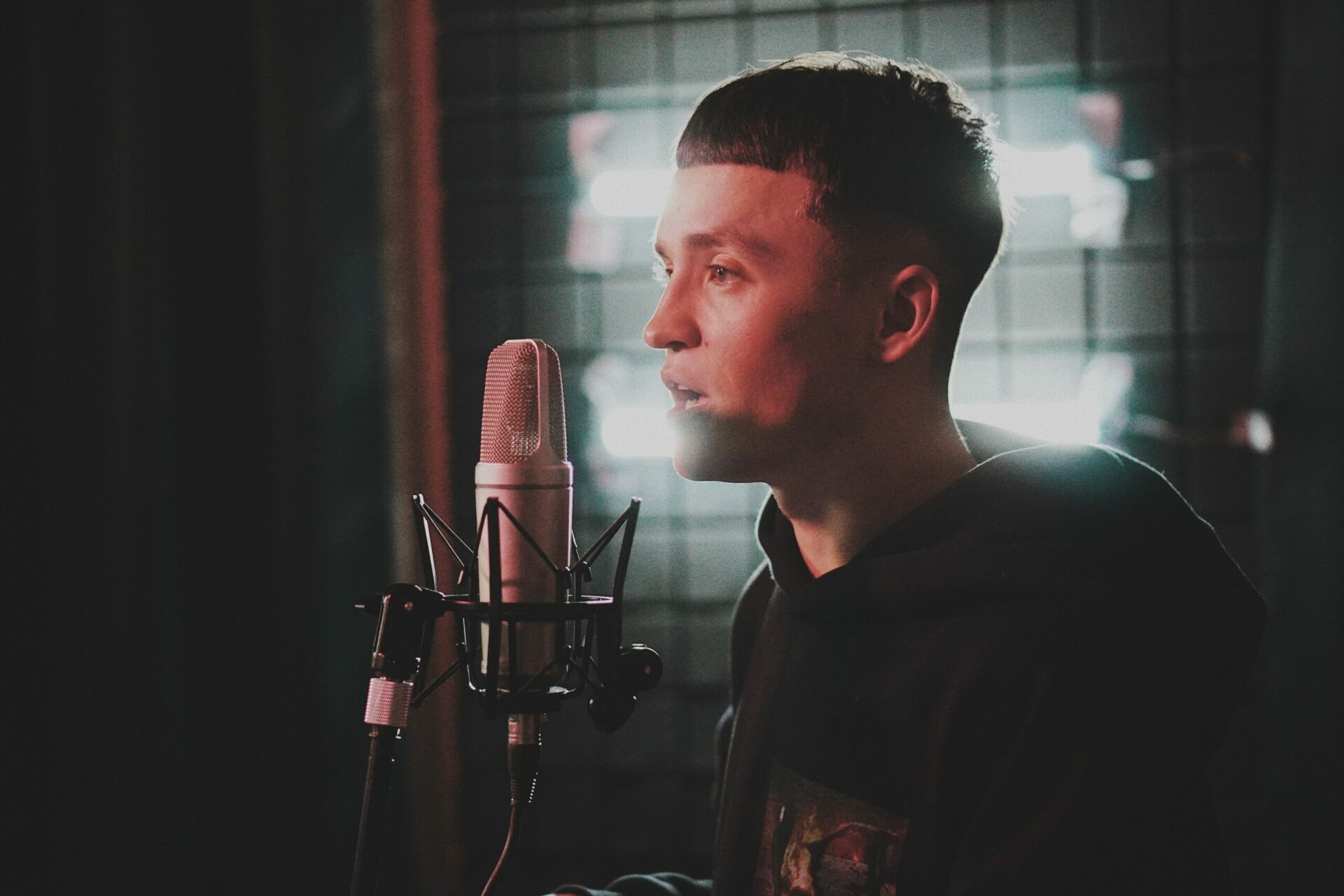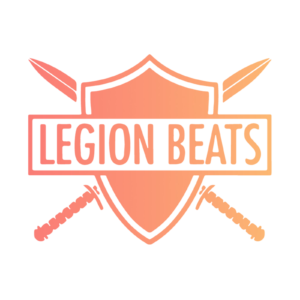
Winning a song contest comes down to one thing: your ability to make a great, professional-sounding song. Making a great song is easier said than done, especially if you have to self-record. But as this article will show, it’s 100% possible to make an absolute banger without a huge budget or top of the line studio equipment. In fact, you don’t even need to leave your bedroom. We’re about to break down everything you need to create a first place-worthy track. Let’s get it.
Step 1: Song Contest Considerations
The first thing you gotta remember when submitting your work to a contest is to understand who the judges are and what they’ll be looking for. Not every song contest is created equal, so get familiar with the criteria you’ll be graded on. Do a little research on who’s going to be judging the contest to give yourself a bit of an edge. If they’ve run song contests before, listen to previous winners. This is kinda like a cheat code because you’ll know exactly what they tend to like.

Having said that, there are some general things to keep in mind, regardless of the contest specifics:
Be Creative. Don’t just copy trends or try to sound like your favorite artist. You’re just gonna end up blending in with everyone else. Bring your own unique sound and flavor to your song.
Commercial Appeal – At the same time, be sure to consider things like song structure, arrangement and having a catchy hook. It doesn’t hurt to follow at least the basic skeleton of today’s hit records. Don't be weird for weird’s sake. The trick is to take pieces of what’s relevant now and flip that in your own unique way.
Step 2: Gear
While you don’t need a state of the art recording studio to make a great song, you’ll need some basic gear to get the best result. We’ll list the bare essentials here:
A Reliable Computer – The first piece of equipment you’ll need is a reliable computer. You’ll be running a DAW (digital audio workstation) to record your song, so you’ll need something with a decent amount of computing power to make sure your creative flow isn’t thrown off by lag or other technical difficulties. This can be a desktop or a laptop, but a laptop may be ideal so you can always cook up on the go.
A Digital Audio Workstation – A digital audio workstation, or DAW for short, is a piece of software used to produce and record music. There are many professional-grade DAWs on the market today including FL Studio, Logic and Ableton. The best lowest-cost option is Garageband, which is basically Logic-lite. It’s included totally for free in all Mac computers. It’s super easy to use so it can be a great place to start if you’re new to the game. Audacity is another free alternative that works on both Mac and Windows.
A Beat – Unless you’re recording some kind of spoken word poetry, you’re going to need an instrumental to sing or rap over. If you’re making a song for a contest, make sure you’re following their rules for which beats you can use. Some may have no limitations, but others may ask you to make a new song from a specific beat or beat pack.
If you’re free to use any beat you want, then the good news is there’s no shortage of beats for sale online and tons of music producers offer free versions of their beats to be used for non-profit purposes. Keep in mind though, if you plan on posting your song to Spotify and other streaming services and want an instrumental that’s free of tags, you’re probably going to have to shell out some bread to buy or lease a beat with for-profit, commercial usage rights.
Be sure to check the beat leasing policy of the producer you’re getting your beats from, otherwise you may end up in a situation where you’re limited in how much and where you can sell, perform, and distribute your songs. Legion Beats is a great option for a well established production team that has a huge catalog of industry quality beats that you can buy or lease for less than most producers. Actually you can get every single beat they release through The Legion Beat Club, which includes 30 beats/month. And right now, you can try it out for just $5 at legionbeatclub.com/join
An Audio Interface – An audio interface is a device that converts the audio frequencies from a microphone or instrument into a format that works with your computer. It also allows sound to route from your DAW to your speakers or headphones. There’s a bunch of audio interfaces to choose from but a great option for beginners on a budget is the Focusrite Scarlett 2i2 which will run you about $120.
A Microphone – One of the most essential pieces of the recording puzzle is a quality microphone. Luckily, once again, you don’t need to break the bank to to get professional sounding vocals. The Shure SM58 is a great mic to consider if you’re looking to get the most bang for your buck. Amazon offers bundles that include the mic itself, a stand, the necessary cables and the all-important pop filter for under $200.
Studio Monitors or Headphones – You’re going to need to know how your song actually sounds so you can make adjustments to your mix and your computer’s built-in speakers just won’t cut it. In a perfect world, you would have both a set of studio monitors (speakers) and a nice pair of mixing headphones, so you can hear your song on multiple devices to get the clearest picture of your mix, but starting with just one of these options is enough to get things rolling. The KRK Rokit 5s are some great low-cost studio monitors to consider and the beyerdynamic DT 1770 PROs are some of the best mixing headphones on the market and priced cheaper than most competitors.
Step 3: The Recording Process

There’s no exact science to the recording process itself but there are some commonly used vocal elements you should know about. Most professional songs use several audio layers to deliver the most polished result. These layers include:
The Base Track – The base track is your initial vocal recording of the rhythm section that serves as the foundation to your vocals. The base track is done before any overdubbing is recorded.
The Harmony – You can think of harmonies as countermelodies that you use to add emphasis and variety to the various parts of your song. The most common place for these harmonies to appear is in your song’s chorus, but they can also be used in verses and bridges.
Background Vocals and Fills – These vocal layers are usually one of the last to be recorded and serve as your chance to fill in pockets of dead space with adlibs, melodies and doubles to give your vocals more character and dimension.
Step 4: Mixing And Mastering
Once you’ve laid down the vocals for your song, the mixing and mastering process begins. This is one of the most important parts of recording and can determine whether you’re going to end up sounding like Jay-Z or a struggling SoundCloud rapper with 3 plays.
Mixing – Mixing is the process of blending each individual audio layer (both the beat and vocals) to make sure every part of your song sounds cohesive. Common mixing techniques include leveling and panning each layer appropriately, EQing out harsh or clashing frequencies, and applying effects like reverb and delay. Every DAW comes with stock tools to help you do this without having to invest any extra money IF you’re willing to lock in and learn the best practices for each mixing technique. YouTube has lots of free resources on every little detail of mixing. It’s a good idea to follow along with a tutorial video or two as you go through this process with your new song.
Mastering – Mastering is all about putting the finishing touches on your song and adding that final bit of polish before it’s time to export your banger and share it with the world. Common steps in mastering include applying compression for added perceived volume, applying a stereo widener for a fuller, more dynamic sound and maybe adding some last EQs to cut out any muddy low frequencies or sharp high frequencies. While it’s best to learn and master these techniques for yourself, there are services available like Bandlab which uses AI technology to automatically master your song for free. Manually mastering will definitely provide the best results but these types of services work well in a pinch.
Final Thoughts:
So there you go. While nothing’s going to beat working with an engineer in a real studio, applying these tips will give you a much better shot at recording something you’re proud of and upping your chances of winning a song contest. Now get out there and start cooking that heat.
– luke4pres
![LB 2020 LOGO [ASSETS] – b logo + b text only](https://legionbeats.com/wp-content/uploads/2016/08/LB-2020-LOGO-ASSETS-b-logo-b-text-only-1-300x78.png)
